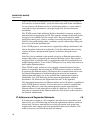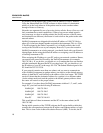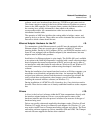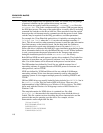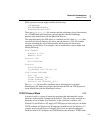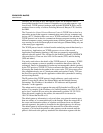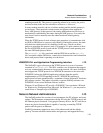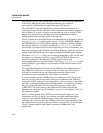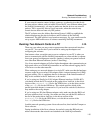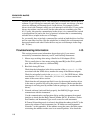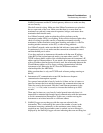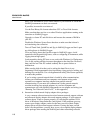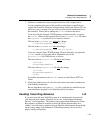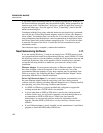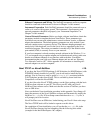
2640A/2645A NetDAQ
Users Manual
I-14
ARP protocol or have static routing tables, you don’t have to use these parameters.
In the Proxy ARP protocol, the routing path between any two hosts is
automatically established by the routers during the ARP process.
The NetDAQ PC software communicates with the NetDAQ instruments in a
totally peer-to-peer manner. Operation of the instruments and software require no
server support. As a result, as long as your network can carry and route TCP/IP
packets, you should have no interaction between communication with the
NetDAQ instruments and other traffic on the network.
The PC software runs in the MS Windows environment and is designed to operate
over any winsock.dll that supports version 1.1 of the WINSOCK standard. A
16-bit WINSOCK and TCP/IP software package (Trumpet) is included with the
PC software. However, if your PCs already have a winsock.dll and TCP/IP
stack loaded, you should use that instead. Especially in Novell environments, you
may want to use the “LAN Workplace for DOS & Windows” product from Novell
instead of the WINSOCK and stack supplied with the NetDAQ Logger software.
Whichever winsock.dll that you use, make sure that there’s only one file with
this name in any directory specified in your PATH. WINSOCK libraries are
specifically matched to the underlying TCP/IP software and are not
interchangeable between software vendors. If the wrong winsock.dll is found
during NetDAQ Logger startup, it will be loaded and the network interface will
not operate.
The NetDAQ instruments have both coaxial (10Base2) and unshielded twisted
pair (10BaseT) connectors for network connection. Only one of these may be
connected to a network at any one time because network activity on the
connection is used to automatically select which is to be active.
If you are already using the TCP/IP protocol for client/server activities on your
network, you may want to review the socket port assignment for the NetDAQ
instruments and PC software. If you already have a service assigned to the socket
port that is used as the default in the NetDAQ products, you may have to change
the port used by NetDAQ. The list of supported services is usually in the
“SERVICES” file in the directory that contains the TCP/IP stack software.
Changing the socket port used by NetDAQ is easy to do (see Chapters 2 and 3 of
this manual for details).
Again, if you are already using TCP/IP, you must assign IP addresses to the
instruments (and PCs of course) in accordance with your established subnet
scheme. If you install the NetDAQ Logger software for “general network”
operation, you are free to select any IP address for the PC and instruments. With
the isolated network operation, you are limited to using the 198.178.246.0 subnet
(Class C subnet assigned to the Fluke Corporation) for both the PC and
instruments.



